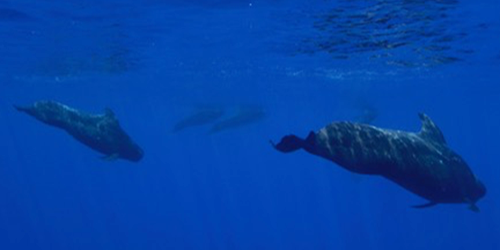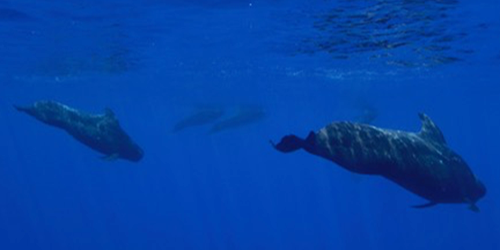Identifying Whale Dialects
You can sometimes tell if a person is from Brooklyn or Texas just by listening to a few words they say. Could the same be true for whales? Scientists have recorded and analyzed the calls of pilot whales and found that an automated program can identify different social groups by their dialects. The team’s computer algorithm could help in conservation efforts that aim to track the social relationships of whales and other animals that are easier to hear than see.
Whales make a wide range of sounds, from whistles and calls to clicks and buzzes. Previous studies have classified whale vocalizations mainly based on how humans perceive sounds or which aspects of a sound spectrum they find important, so they may be overlooking audio features that only whales are attuned to. Moreover, existing methods are based on determining each individual sound of each whale recorded, thereby requiring large amounts of data about each call.
A team of physicists and biologists from Ocean Sounds in Norway, the Max Planck Institute, and the University of Göttingen, both in Germany, have developed a more objective and broadly applicable statistical method for analyzing whale sounds. In the waters off the coast of Norway, the team followed six separate groups of long-finned pilot whales, recording several hundred calls from each group. Instead of individual call identification, the team analyzed the statistics of cepstral coefficients across all calls recorded from a group. These coefficients quantify how the sound characteristics change over time. The results showed that intergroup differences were significantly larger than intragroup differences, showing the method can automatically identify groups.
This research is published in Physical Review E.
–Michael Schirber





